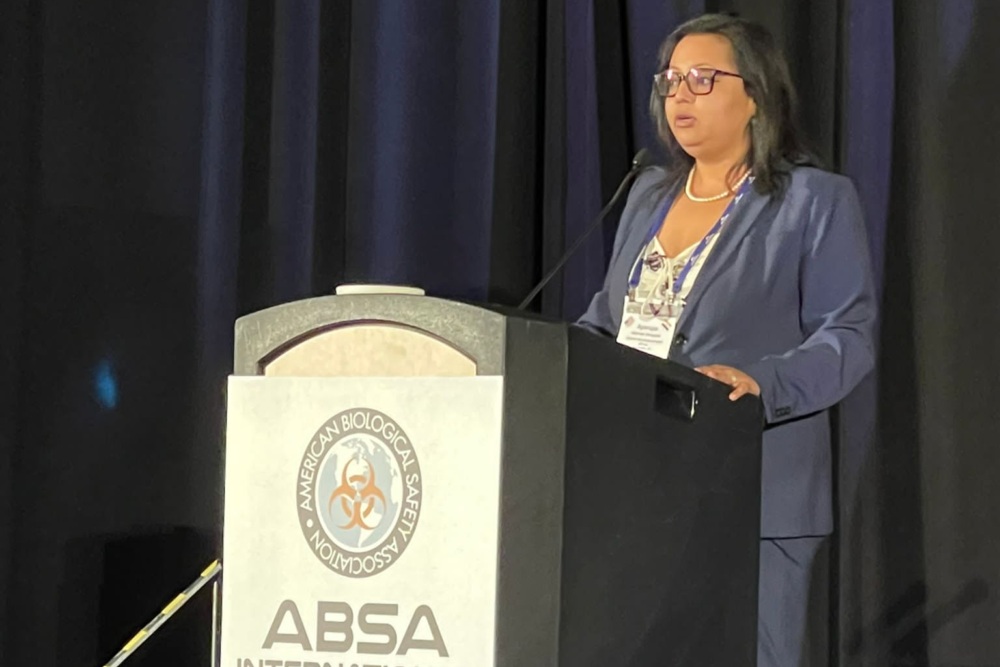
Angela Kane
Senior Advisor
Atomic Pulse
About the image
This piece was originally posted by the European Leadership Network. View it here.
The current conflict in Ukraine has caused severe disruption to regional and global security, including growing concerns about the potential use of unconventional weapons. Not least of these concerns is the dangerous disinformation campaign by Russia alleging bioweapons development in Ukraine, which has led to concerns that Russia may itself use chemical or biological weapons in Ukraine as part of a false flag operation. These allegations have highlighted the salience and importance of efforts to guard against biological risks, and they have drawn attention to gaps in the global biosecurity and pandemic preparedness architecture.
This comes on the heels of continued uncertainty and ongoing debate about the origins of COVID-19. The international community may never be able to resolve this question, but we must be prepared for future biological events, which could arise from a wide range of sources—including naturally emerging outbreaks, deliberate bioweapons attacks or laboratory accidents with catastrophic consequences. The ability to rapidly discern the source of emerging pandemics is critical to mitigating their effects in real time and protecting against future risks.
To meet this need, it will be important to bolster the capabilities of the United Nations’ system to investigate pandemic origins. This includes strengthening and investing significantly more resources in existing capabilities such as the United Nations Secretary-General’s Mechanism, which has the authority to investigate allegations of deliberate bioweapons use. Ongoing World Health Organization efforts to strengthen its capabilities to address outbreaks of uncertain origin are also laudable, including the establishment of the Scientific Advisory Group for the Origins of Novel Pathogens. However, even with these efforts, a critical gap will remain: investigating the source of biological events of unknown origin, which falls at the “seam” between the authorities and capabilities of these existing mechanisms.
How can this gap be addressed? In a 2020 report, “Preventing Global Catastrophic Biological Risks,” the Nuclear Threat Initiative, working with international partners, explored the possibility of establishing a “Joint Assessment Mechanism” to determine the source of high-consequence biological events of unknown origin. This proposed mechanism would address cases where there is ambiguity about the source of a biological event — specifically, whether it emerged naturally or was deliberately or accidentally released from an academic, commercial, or government laboratory. The report was based on a senior-level tabletop exercise hosted in partnership with the Munich Security Conference, including some members of the European Leadership Network among other senior experts and practitioners, and the concept has since been further refined in consultation with international experts and stakeholders.
Subsequent developments have highlighted the importance of rapidly discerning pandemic origins and the salience of the proposed Joint Assessment Mechanism. In the wake of the devastating global effects of the COVID-19 pandemic, UN Secretary-General Guterres, in his 2021 report “Our Common Agenda,” called for more investment in preparedness and response capabilities to combat future pandemics. Now, the war in Ukraine has raised the spectre of another potentially catastrophic risk: the potential for Russia to covertly use chemical or biological weapons under a false flag operation.
Questions remain regarding how best to build political support for the Joint Assessment Mechanism’s establishment, what its core mandates and functions would be, how it would relate to existing mechanisms, how to incentivise compliance, and how to incorporate modern scientific and technological tools. In discussions among international experts and stakeholders, there has been considerable support for establishing the home for this entity within the office of the UN Secretary General—as this would provide the needed authority and flexibility to activate and deactivate as necessary, as well as pull together relevant resources from the UN system.
No one knows where the next global biological catastrophe will come from. Nor do we know when it will occur. However, having the capacity to establish the facts about an outbreak will greatly increase the international community’s ability to effectively prevent or respond to the next potential biological catastrophe. COVID-19 has shown the need to fill critical gaps in global capabilities, as well as to establish public trust in the source of the information. The Joint Assessment Mechanism could be the instrument to achieve both.
The opinions articulated above represent the views of the signatories and do not necessarily reflect the position of the European Leadership Network or the entirety of its membership. The ELN’s aim is to encourage debates that will help develop Europe’s capacity to address the pressing foreign, defence, and security policy challenges of our time.
Image: Flickr, USARJ NCO CORPS.
Sign up for our newsletter to get the latest on nuclear and biological threats.
NTI is working with international partners to develop a new Joint Assessment Mechanism (JAM) within the office of the UN Secretary-General to rapidly identify outbreak origins. Without the ability to quickly determine the origin of an outbreak, researchers are hampered in their ability to rapidly develop vaccines and other medical countermeasures that can slow the pace of the outbreak, ultimately saving countless lives.
NTI | bio Senior Program Officer Dr. Aparupa Sengupta on why efforts to strengthen global biosafety and biosecurity must prioritize diversity and inclusion.
NTI | bio Senior Director Nathan Paxton on using democratic collaboration to improve pandemic security



